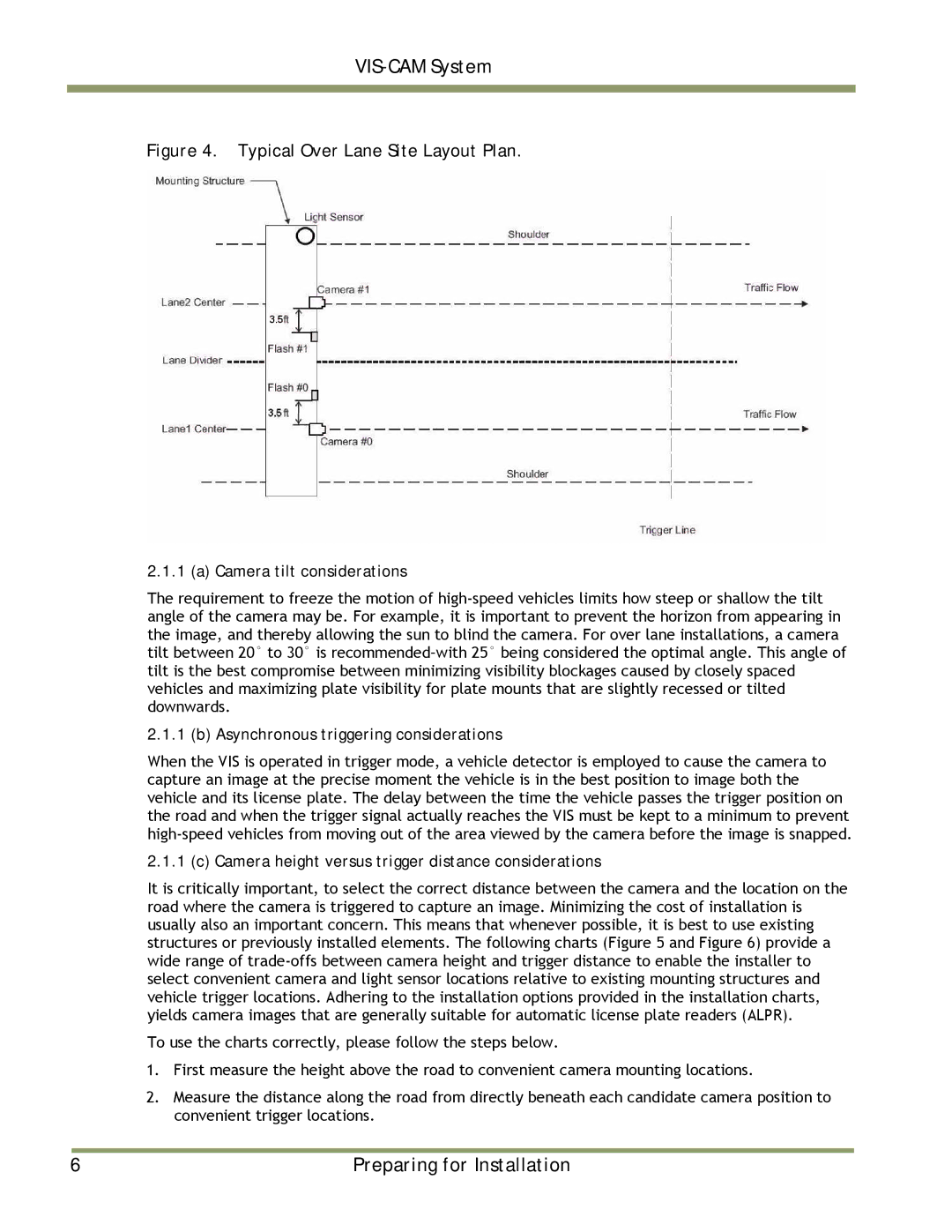
VIS-CAM System
Figure 4. Typical Over Lane Site Layout Plan.
2.1.1 (a) Camera tilt considerations
The requirement to freeze the motion of
2.1.1 (b) Asynchronous triggering considerations
When the VIS is operated in trigger mode, a vehicle detector is employed to cause the camera to capture an image at the precise moment the vehicle is in the best position to image both the vehicle and its license plate. The delay between the time the vehicle passes the trigger position on the road and when the trigger signal actually reaches the VIS must be kept to a minimum to prevent
2.1.1 (c) Camera height versus trigger distance considerations
It is critically important, to select the correct distance between the camera and the location on the road where the camera is triggered to capture an image. Minimizing the cost of installation is usually also an important concern. This means that whenever possible, it is best to use existing structures or previously installed elements. The following charts (Figure 5 and Figure 6) provide a wide range of
To use the charts correctly, please follow the steps below.
1.First measure the height above the road to convenient camera mounting locations.
2.Measure the distance along the road from directly beneath each candidate camera position to convenient trigger locations.
|
|
|
6 | Preparing for Installation | |
